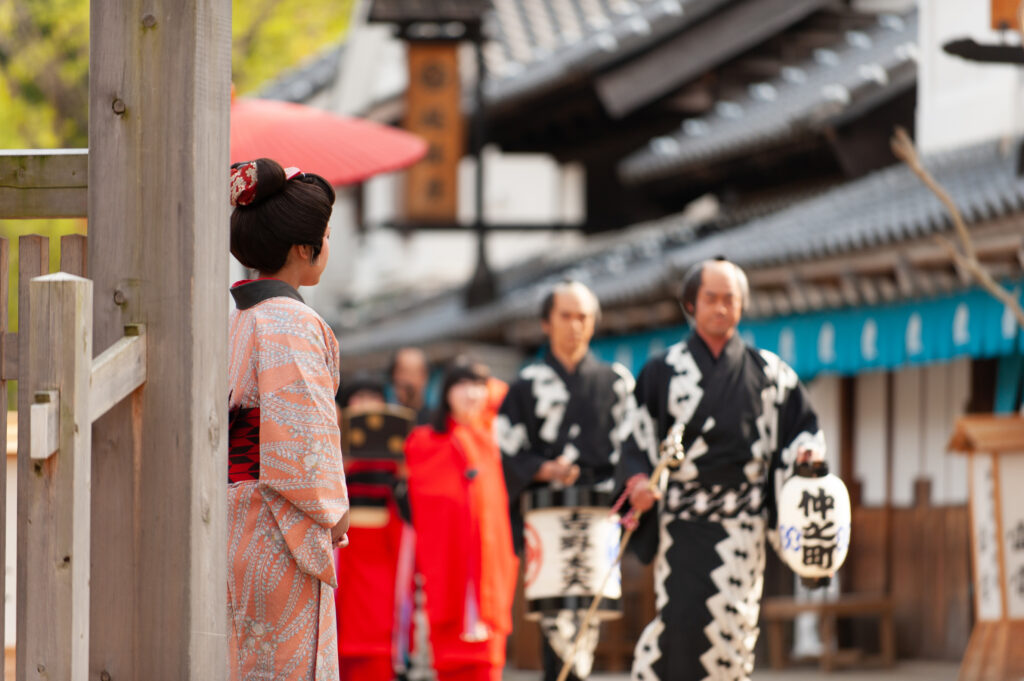First held in 1990, the Shinagawa Shukuba Festival celebrates the history of the area that served as the first of 53 shukuba-machi (post towns) along the Tokaido Road; one of the five highways that connected the capital of Edo (present day Tokyo) to the imperial seat in Kyoto over 400 years ago.
Shukuba-machi were flourishing places that offered lodging, refreshments, supplies, and food for travelers who journeyed the entire distance of 514 kilometers in about two to three weeks, either by foot, cart or animal.

At the Shinagawa shukuba-machi, travelers used to also be entertained by oiran, who were highest-ranking courtesans. Of course, they don’t exist anymore, but some events in Japan like the Shinagawa Shukuba Festival (held on the last weekend of September annually), reenacts scenes from the past, like that of oiran parading the streets in their most beautiful kimono and extravagant hairstyles.
During the Edo Period (1603 – 1868), the attire of oiran was designed to showcase her nobility as much as possible, using multiple Japanese-style hair pins that were considered high-class, and wearing the luxurious ribbon of the obi belt in the front (instead of the standard way of it being in the back). In my own research, I discovered that an oiran’s entire outfit can weigh about 27 kilograms (7 kilograms just for the wig)! It’s no wonder she is usually walking with one hand on somebody’s shoulder to help maintain balance.
In order to become an oiran, a woman had to be educated in a number of skills, including the traditional arts of tea (sado), flower (ikebana) and calligraphy (shodo). They were also expected to be knowledgeable in a variety of subjects in order to carry witty and intelligent conversations with guests. Kamuro were younger girls who were selected to be future oiran and they were trained to behave as such from childhood. During the parade, the kamuro attendants precede the oiran.
Shinagawa Shukuba Festival: https://en.japantravel.com/tokyo/shinagawa-shukuba-matsuri/60309
